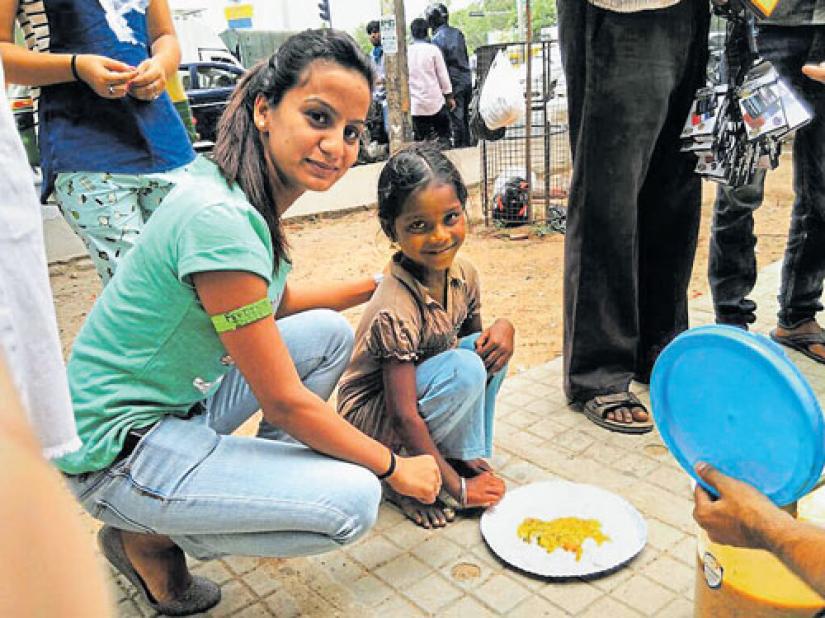 One major complaint against the ruling Bharatiya Janata Party (BJP) in India is that over the years, a rabid jingoism has come to overlay its political discourse. This is noticeable in the unconcealed anger among some BJP leaders, as they bristle against uncomfortable questions. They shrug off all criticism of their government even over the palpably negative features of its rule: the long economic slowdown, the growing gap between the rich and others, and glaring social sector failures that shock non-Indian observers.
One major complaint against the ruling Bharatiya Janata Party (BJP) in India is that over the years, a rabid jingoism has come to overlay its political discourse. This is noticeable in the unconcealed anger among some BJP leaders, as they bristle against uncomfortable questions. They shrug off all criticism of their government even over the palpably negative features of its rule: the long economic slowdown, the growing gap between the rich and others, and glaring social sector failures that shock non-Indian observers.
This phase in Indian politics started about three/four years ago. Naturally, the official proclivity to gloss over the unpleasant facts of life grates on the nerves of most people. But truth will out, as ruling party leaders have learnt after the latest figures were released by the World Hunger Index. These reveal India’s remarkably skewed food consumption figures that mock tall official claims about becoming a $5 trillion economy in the near future.
The question arises, how did the BJP win even more seats and votes in the 2019 Loksabha polls than in 2014?
The answer is, most Indians still feel that for all his failures and missteps, Narendra Modi is still their best bet. They also support BJP-backed mega official initiatives like the Swacch Bharat, the easy availability of cooking gas, an effective health insurance (Ayush scheme), and tax reforms and ongoing infra projects.
But the catalogue of grievances on the debit side of the political ledger can no longer be ignored. Out of 119 countries in the World Hunger Index (WHI) India stands at a lowly 102, well behind Bangladesh (84) and Pakistan (90). In providing food to its people, India does better only than countries like Lesotho, Zimbabwe, war-torn Yemen and the Central African Republic!
The disclosure has certainly taken the wind off the sails of the BJP ship of state, for the time being. Unlike the systematic downgrading in recent times of India’s growth potential and future projections of economic progress by bodies like the World Bank, the IMF etc, the damning evidence of India’s failure in food distribution cannot be swept under the carpet. For once, ruling party leaders kept silence on the crisis at home, even as the Government found time to urge upon Turkey to desist from its anti-Kurd operations in Syria!
In 2018, India’s position was even worse, as on the same list its rank was 103. This is scant comfort: the fact is during the last 20 years, India’s ranking in the WHI has come down by 20 places.
This carries the worst possible message for Modi and his team: it means that during the rule of Indian National Congress (INC) and its coalition the UPA, India’s position was much better, it never went below 100!
It is a sign of the emasculation of Indian opposition parties that they have been unable to capitalize on such major negative revelation, except by way of scoring minor debate points on TV chat shows. Some aspects of India’s food availability and its wretched public delivery mechanism situation, as reported by a section of the predominantly pro BJP national media are alarming indeed.
For instance, few people are aware that the number of people who suffer from ‘acute’ spells of hunger at certain times of the year is 680 million, well over 50% of the estimated Indian population of around 1.2 billion! This is the finding of a recent national survey. It is easily the highest figure in the world. Out of 29 major states, only three are relatively comfortable when it comes to providing enough food for their citizens---Goa, Kerala and Mizoram.
Alarmingly, the bulk of people who live in States where ‘acute’ hunger for many people is a sad fact of life can be found in Gujarat( surprise, surprise, this is India’s most advanced state in terms of GDP and investment per capita income), Uttar Pradesh Madhya Pradesh, Bihar, Rajasthan, Jharkhand, Odisha, and Madhya Pradesh, among others. Interestingly, no South Indian state falls in this dreaded category, as also West Bengal.
But Bengal’s position is only marginally better. It is grouped among states which have ‘serious’ hunger problems among some sections of the population.
It is relatively easy to identify the most hungry and economically vulnerable people who go short of food in India. The bulk of them are India’s tribals like Santhals, the Gonds, the Banjaras, the Gujjars, the Bheels and others. Most live in the states where ‘acute’ hunger is reported. The reason: the lop-sided and unplanned development policies that favour the expansion of the corporate sector at the cost of the environment and common people. Both the INC and the BJP have been complicit in their quest to keep the multinationals and the big corporates happy and to hell with the rest of the people! As an analyst said in a recent TV interview, 9 people/families now control over 50% of India’s national economic assets, leaving over 1 billion people scrambling to eke out a living.
Because of massive mining, hydro-electric, real estate and power production projects, millions of tribals have been thrown on the streets with or without a pittance of compensation, as thousands of acres of forest land has gone over to the corporate over the years, depriving millions of livelihood, food and shelter. The process has continued over a decade. No wonder the extremist Maoist agitation has been reported from around 170 out of nearly 600 districts in India. The number of ‘climate refugees, a euphemism for pauperized tribals currently trying to earn a living on the streets of Mumbai or Delhi and elsewhere is well over 20 million!
It is true that for well over a decade, death by starvation among even the poorest people in India has not been reported, thanks to alert media coverage. Despite occasional weather aberrations and long dry spells thanks to global warming, agricultural productions as a whole have remained steady. The food stock position is also more than comfortable, standing at nearly 700 million tonnes against a required annual buffer of around 308 mts.
This has often emboldened policymakers to suggest that India should export in bigger volumes from its surplus food grains stocks to countries like the CAR, Ethiopia or Yemen etc. As it is, by another irony, between 25/30% of the stocks are lost annually thanks to poor storage facilities, the depredation of mice, etc.
Suggestions that even a small part of existing stocks could be diverted for urgent, free of cost supplies to economically backward pockets like Purulia/Bankura in Bengal, Kalahandi and Bolangir in Odisha, and other areas in Jharkhand, Madhya Pradesh or Chhattisgarh, to help tribals and others suffering from chronic malnutrition, have never been seriously discussed. The idea is seen as being too radical. To the more rational (?) and non-radical planners, nothing could be more sinful than opposing the central article of faith of a market economy----there must be no free lunch for anybody in the society(with the honourable exception of mice and other pests, of course!). So far the defenders of the market economy in India have not found anything wrong in the massive degradation of the ecology and the environment in some states, nor about the colossal wastage of food through negligence.
 International
International
41279 hour(s) 28 minute(s) ago ;
Afternoon 06:22 ; Wednesday ; Jul 02, 2025
India’s wretched record in feeding its poor
Send
Ashis Biswas, Kolkata
Published : 06:00, Oct 21, 2019 | Updated : 06:00, Oct 21, 2019
Published : 06:00, Oct 21, 2019 | Updated : 06:00, Oct 21, 2019
0 ...0 ...
/srj/
Topics: Top Stories
- KOICA donates medical supplies to BSMMU
- 5 more flights to take back British nationals to London
- Covid19: Rajarbagh, Mohammadpur worst affected
- Momen joins UN solidarity song over COVID-19 combat
- Covid-19: OIC to hold special meeting
- WFP begins food distribution in Cox’s Bazar
- WFP begins food distribution in Cox’s Bazar
- 290 return home to Australia
- Third charter flight for US citizens to return home
- Dhaka proposes to postpone D8 Summit
Unauthorized use of news, image, information, etc published by Bangla Tribune is punishable by copyright law. Appropriate legal steps will be taken by the management against any person or body that infringes those laws.
Bangla Tribune is one of the most revered online newspapers in Bangladesh, due to its reputation of neutral coverage and incisive analysis.
F R Tower, 8/C Panthapath, Shukrabad, Dhaka-1207 | Phone: 58151324; 58151326, Fax: 58151329 | Mob: 01730794527, 01730794528


